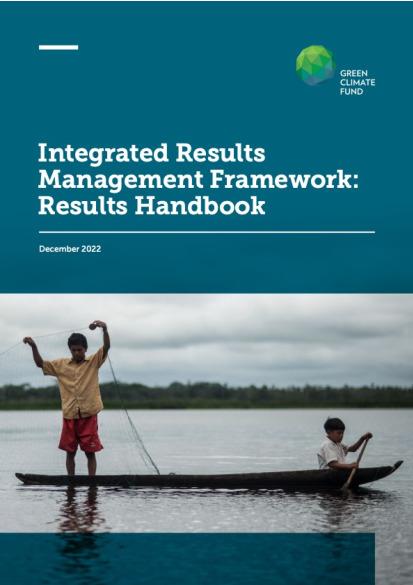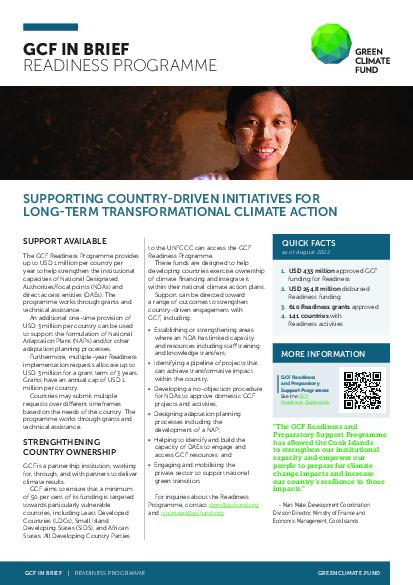Publications
The Green Climate Fund issues a range of publications for our direct and indirect stakeholders on a diversity of issues – for the general public to industry experts. Stay in tune with our mission and activities around the planet with the issues that speak to you.
Featured publications

SAP Technical Guidelines: Cities and climate change
February 2023
Traditionally, cities are defined as large human settlements, with no one standardized definition applied internationally. Frequently, national governments have criteria they use to define urban areas. These criteria can vary to include aspects such as administrative boundaries, living conditions or population density. Another approach is what is termed “urban agglomeration”, which considers the extent of an urban area, or sometimes, that of a built-up area, to identify a city’s boundaries....

SAP Technical Guidelines: Forests and land use
February 2023
This publication provides technical guidance for the preparation of SAP proposals. The thematic area of forest and land use encompasses forests and other multiple land-cover types where forests are a prominent component of the landscape. This can range from natural forests, where ecosystems are not directly impacted by human activities (e.g. primary forests) to more intensively transformed landscapes – such as secondary growth forests, degraded forest landscapes, agroforestry systems and trees...

SAP Technical Guidelines: REDD+
February 2023
This guidance has been developed to support GCF accredited entities (AEs) and national designated authorities (NDAs) in their preparation of concept notes and funding proposals under the simplified approval process for REDD+ (REDD+ SAP). Please note that the English document is currently the most up to date version of the technical guideline. The French and Spanish translations are being reviewed and will be soon available for download.

SAP Technical Guidelines: Energy efficiency for industry and appliances
February 2023
This publication provides technical guidance for the preparation of SAP proposals. Energy efficiency (EE) is the process of reducing the energy consumption of infrastructure, facilities, machines, devices, products, services, business processes, activities and transport. It can be thought of as the first fuel of a sustainable world and as such it has a key role in ensuring cost-effective energy transitions. Please note that the English document is currently the most up to date version of the...

SAP Technical Guidelines: Renewable energy
February 2023
This publication provides technical guidance for the preparation of SAP proposals. Renewable energy (RE) is produced using natural resources that are constantly replaced within the human timescale. Just as there are many natural sources of energy, there are many technologies that can help to harness RE sources. Solar photovoltaic (PV) is the most well- known, wind power is the most widespread and hydropower is one of the oldest. Other RE technologies harness geothermal energy, solid waste or...

SAP Technical Guidelines: Water security
February 2023
This publication provides technical guidance for the preparation of simplified approval process (SAP) proposals for water security projects. GCF defines the water sector as encompassing surface freshwater resources and groundwater, but not oceans. Since the water sector is interlinked with several other sectors, such as agriculture and ecosystems, it is necessary to delineate its scope. Thus, the emphasis in this technical guidance a is on four sub-sectors: Integrated water resources...

SAP Technical Guidelines: Agriculture and food security
February 2023
This publication provides technical guidance for the preparation of SAP proposals. The agriculture thematic area encompasses agricultural production, land-use change caused by agricultural production and the food system in general. Agricultural production covers crop production and livestock. In addition to agricultural production the food system includes all steps from “farm to fork”: post-harvest handling, storage, manufacturing, processing, transport, retailing, consumption and food loss and...

Simplified Approval Process (SAP) funding proposal preparation guidelines: A practical manual for the preparation of SAP proposals
December 2022
These guidelines have been developed to support GCF accredited entities (AEs) in the preparation of funding proposals under the simplified approval process (SAP) pilot scheme. This document provides general clarifications on the indicative content expected in a SAP funding proposal submitted to GCF. More specific SAP Technical Guidelines on the type of activities by sector have also been developed separately by the Secretariat. This document refers to policies approved by the GCF Board in...

Egypt’s climate investment plan: From climate strategy to investment plan
November 2022
The Green Climate Fund (GCF) and the Government of Egypt (GoE) announces the launch of the Egypt Climate Investment Plan at COP27. The plan will be developed in two volumes covering investment needs and ambition (Volume 1) and how the GoE, GCF, and other climate financiers can systematically match different financial resources, maximising the sources of funding available (Volume 2). This brochure provides an overview of the background to, and role of the investment plan, and highlights some of...

GCF in Brief: Adaptation Planning
November 2022
The Green Climate Fund is committed to investing in developing countries’ efforts to adapt to the effects of climate change. GCF aims to deliver a 50:50 balance between mitigation and adaptation allocations in its portfolio, and ensure that at least 50% of adaptation funding goes to particularly vulnerable countries, including LDCs, SIDS and African States. This factsheet provides an overview of how GCF supports adaptation planning in the countries where it operates.

GCF Appraisal Guidance: A comprehensive guide to the tools and due diligence processes used to review and assess concept notes and funding proposals
June 2022
This document is no longer available The GCF Programming Manual, the Appraisal Guidance along with some of its annexes have been removed from circulation. Updated guidance on Concept Notes and Funding Proposals is currently under development and will be provided when complete.

Thematic brief: Investing in Great Green Wall countries
June 2022
The Sahel region is particularly vulnerable to climate change. Temperatures rising 1.5 times faster than the rest of the world are causing more intense droughts and floods consequently threatening the agropastoral livelihoods of most of the population. In 2007, the African Union launched the Great Green Wall (GGW) initiative to restore 100 million hectares of the continent's degraded landscapes, combat desertification, and help people in the Sahel mitigate and adapt to climate change. More...

GCF in Brief: Simplified Approval Process
May 2022
The Green Climate Fund is moving quickly to build a large and transformative project portfolio, with many projects already under implementation. To simplify and streamline the approval of certain small scale projects, GCF’s Board has approved a new approach: the Simplified Approval Process (SAP). The simplifications in this new approach should lead to a reduction in time and effort required to go from project conception to implementation.

Draft results handbook
May 2022
Targeting accredited entities and executing entities as its primary audiences, the GCF’s results handbook aims to provide practical guidance on how to apply the IRMF for GCF-funded projects/programmes through funding proposal development, planning, monitoring, and reporting activities, as well as interim and final evaluations. The handbook defines each IRMF indicator and its measurement approaches with tools and reporting formats where applicable. As per the Board decision on the IRMF (...

Annual Results Report 2021
April 2022
Annual Results Report 2021: Promoting low emission, climate-resilient recovery and maintaining climate ambitions during the pandemic. GCF's annual report, available in both web and pdf versions, provides an overview of our achievements during 2021. The year 2021 continued to be a period of uncertainty and upheaval for the world, but it was also a year wherein the Green Climate Fund (GCF) made huge strides in supporting low emission, climate-resilient development pathways. Nearly USD 3 billion...

GCF handbook: Decisions, policies and frameworks (updated March 2022)
March 2022
The purpose of the “GCF Handbook” is to make it easier for users to more easily navigate the GCF’s decisions and policies. To facilitate this, each primary Board decision and related policy framework has been given a descriptive title, and placed within one of ten issue oriented chapters. There, the decisions and related frameworks have been further divided by sub-issue with the most recent action on any topic listed first. The decisions and related frameworks that are particularly policy rich...

ASEAN Catalytic Green Finance Facility (ACGF)
February 2022
Economic growth in developing countries in Southeast Asia must be de- coupled from carbon emissions to support the climate transition. In the Philippines, Indonesia, and Malaysia, fossil fuels dominate the power supply, and there is an increasing demand for passenger and freight transport. Deforestation and forest degradation continue to destroy critical carbon sinks across Cambodia, Indonesia, and Lao PDR. Southeast Asia also presents fast-changing climatic vulnerabilities, with average...

The Global Subnational Climate Fund (SnCF GLOBAL)
February 2022
Climate action means local action: 70% of climate solutions fall under the boundaries of sub-national authorities. But there is a chronic shortage of private finance for such local solutions, since investors prefer larger investments that are perceived as safer. Structuring and de-risking sub- national projects is essential to catalyse funding from both private and public investors.

GCF in Brief: Direct access
December 2021
One of the Green Climate Fund’s distinctive features is the provision for developing countries to access financial resources through national entities, meaning that climate finance can be channelled to the country directly. This factsheet explains how direct access works and the support provided for direct access Accredited Entities.





